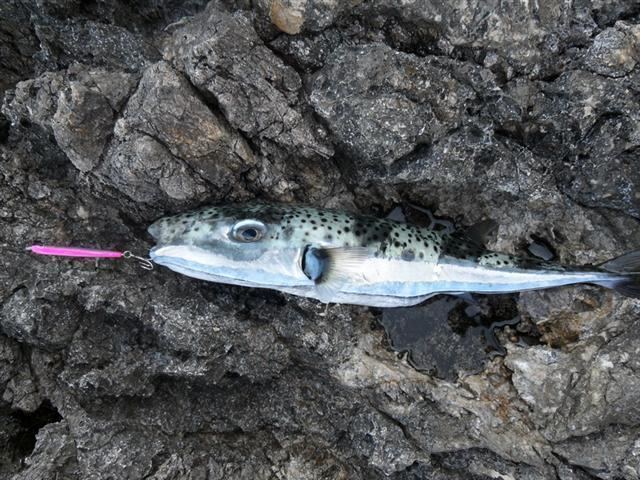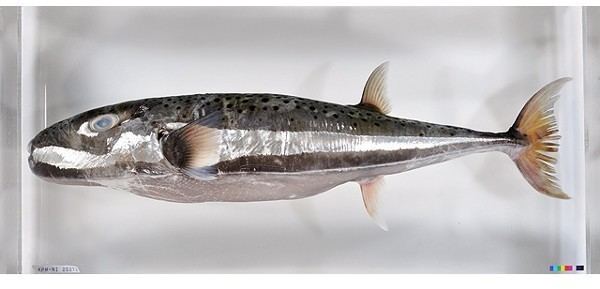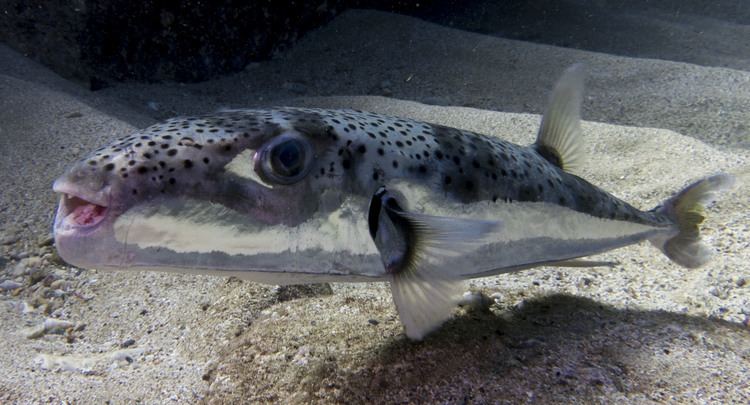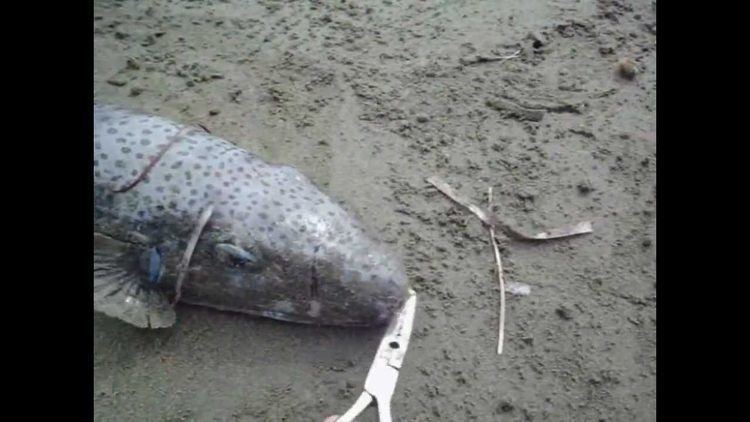Higher classification Lagocephalus | Family Tetraodontidae Phylum Chordata Rank Species | |
 | ||
Similar Lagocephalus, Pufferfish, Lagocephalus spadiceus, Oceanic puffer, Spiny blaasop | ||
lrf silver cheeked toadfish lagocephalus sceleratus on light rock fishing
The Lagocephalus sceleratus (Gmelin, 1789), known as the silver-cheeked toadfish, is an extremely poisonous marine bony fish in the family Tetraodontidae (puffer fishes).
Contents
- lrf silver cheeked toadfish lagocephalus sceleratus on light rock fishing
- Silver toadfish lagocephalus sceleratus
- Habitat and distribution
- Description
- Feeding
- Reproduction
- Danger to humans
- References

Silver toadfish lagocephalus sceleratus
Habitat and distribution
The species is common in the tropical waters of the Indian and Pacific oceans. It is a recent Lessepsian migrant into the eastern Mediterranean Sea, which it reached through the Suez Canal. It has been caught off the coasts of Israel, the south of Turkey, in Cyprus, the south coasts of mainland Greece, Crete and Rhodes. Recently, in 2013, it has been reported off the waters off Lampedusa Island in the central Mediterranean, and in 2015 off Malta and also in waters near the town of Bečići, Montenegro, on the southeastern Adriatic Sea.

The silver-cheeked toadfish lives in open waters on rocky bottoms, from shallow coastal waters down to a 250m depth (in the Red Sea).
Description

The silver-cheeked toadfish is very similar to the oceanic pufferfish but more elongated and with a symmetrical caudal (tail) fin. Its back is grey or brown with darker spots and it has a white belly. A characteristic silver band runs along the sides of the fish. The silver-cheeked toadfish can measure up to 40 centimetres (16 in).
Feeding
The silver-cheeked toadfish preys upon benthic invertebrates.
Reproduction
Eggs and larvae are found in the pelagic zone.
Danger to humans

Similar to other puffer fishes, the silver-cheeked toadfish is extremely poisonous if eaten because it contains tetrodotoxin in its ovaries and to a lesser extent its skin, muscles and liver, which protects it from voracious predators. It becomes toxic as it eats bacteria that contain the toxin. This deadly substance causes paralysis of voluntary muscles, which may cause its victims to stop breathing or induce heart failure. Fatal intoxications have been reported in Egypt and Israel.

